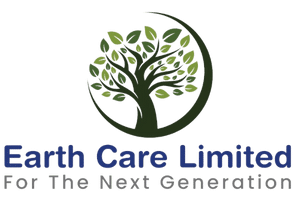Bio Plastic
Biodegradation Process of Bio Plastic
Plastics is versatile, hygienic, lightweight, flexible and highly durable. It is used across almost every sector, including to produce packaging, in building and construction, in textiles, consumer products, transportation, electrical and electronics and industrial machinery.
Plastic has become an indispensable element of our modern lifestyle and made our everyday easy and comfortable. But, unfortunately, plastics, especially the single use plastics are one of the major manmade pollutants. So, there is a dilemma now a days whether to use or not to use single use plastic. In this scenario, in every corner of the planet, many great minds are looking for solutions to this burning problem.
The first ever plastic was produced back in 1907. It is joked that, we will not be able to experience the first plastic to bio degrade even in our life time, it may take a dozen of our generations.
Bio Plastic is a product, designed in such a way, that, it will degrade within a couple of years, when it is discarded in the environment at the end of its useful economic life. The discarded Bio Plastic will leave only gas (Methene & Carbon Dioxide), water and bio mass within the process of degradation.
Usually, general plastic takes several hundred years to get disseminate in the environment, because it is not palatable to the bacteria. But Bio Plastic degrades in the environment within a couple of years after discarding. It is consumed by the bacteria due to its specially designed polymer additive, which make it more palatable to the bacteria population.
Bio Plastic is a solution to the riddle between usefulness of plastic and the wellbeing of the planet.
Welcome to the future, Bio Plastic.
Biodegradable bags are made from plant-based materials like corn starch, pea starch, potato starch, or cellulose. These materials are biodegradable because they contain natural polymers that can be broken down by microorganisms in the environment.
The breakdown process of biodegradable bags begins when microorganisms like bacteria, fungi, and enzymes start to consume the bag’s organic material. When they feed on the material, they break it down into smaller pieces, which can be further broken down by other organisms. This process is known as biodegradation.
When biodegradable bags are discarded in the environment, the microorganisms present in the soil and water start to feed on their organic materials. The microorganisms secrete enzymes that break down the long chains of polymers into smaller molecules, such as carbon dioxide, water, and other organic compounds.
As the bags continue to break down, they become smaller and smaller until they eventually become part of the surrounding environment. The final products of the biodegradation process are harmless natural elements that can be safely absorbed back into the ecosystem.
The rate of biodegradation depends on various factors such as temperature, moisture content, oxygen availability, and the presence of other nutrients. In ideal conditions, biodegradable bags can break down in as little as a few weeks to several months.
It is important to note that not all biodegradable bags are created equal. Some biodegradable plastics may only break down under certain conditions, such as high heat or sunlight exposure, while others require specific microbial environments to decompose properly. Therefore, it is essential to choose biodegradable bags that meet certification standards such as ASTM D6400 or EN 13432 to ensure that they will break down in a safe and environmentally-friendly manner.
Versatility and Functionality: Biodegradable plastic bags come in various sizes and shapes, making them suitable for a wide range of applications, including shopping bags, produce bags, and food packaging. They offer comparable durability and strength to traditional plastic bags while offering an environmentally conscious choice.
Consumer Awareness and Adoption: As environmental awareness grows, consumers are increasingly seeking alternatives to single-use plastic bags. Biodegradable bags provide a viable option for individuals and businesses striving to reduce their carbon footprint and promote sustainable practices.
It’s important to note that while biodegradable plastic bags offer advantages over conventional plastic bags, proper disposal and management are crucial. Ensuring that these bags end up in appropriate waste streams, such as industrial composting facilities, helps maximize their biodegradability and environmental benefits.
How Does Bio Plastic Help In Cleaning Environment?
Biodegradable bags clean the environment in several ways. When they decompose, they release natural elements that can be absorbed back into the ecosystem without causing harming the ecology. Plus, the bags are made from plant-based materials that contain natural polymers. As a result, they do not release harmful toxins or pollutants during decomposition, unlike traditional plastic bags.
Secondly, biodegradable bags reduce the amount of waste that accumulates in landfills. Plastic bags can take hundreds of years to degrade. So, they contribute significantly to the accumulation of non-biodegradable waste. However, biodegradable bags break down much more quickly, reducing the amount of waste that ends up in landfills and improving overall waste management.
Moreover, biodegradable bags reduce marine pollution. When traditional plastic bags end up in oceans and waterways, they pose a significant threat to marine life. It leads to entanglement, ingestion, and suffocation. Biodegradable bags, conversely, decompose quickly in water environments, reducing the risk of harm to marine animals and their habitats.
In addition, the manufacturing process for biodegradable bags is often more sustainable and eco-friendlier than traditional plastic bags. Earth Care use renewable resources and energy-efficient production methods to create products that have minimal environmental impact.
Overall, biodegradable bags provide an effective solution to the problem of plastic pollution. By using biodegradable bags, we can help to clean the environment by reducing waste, reducing the risk of harm to wildlife, and reducing the environmental impact of manufacturing.












